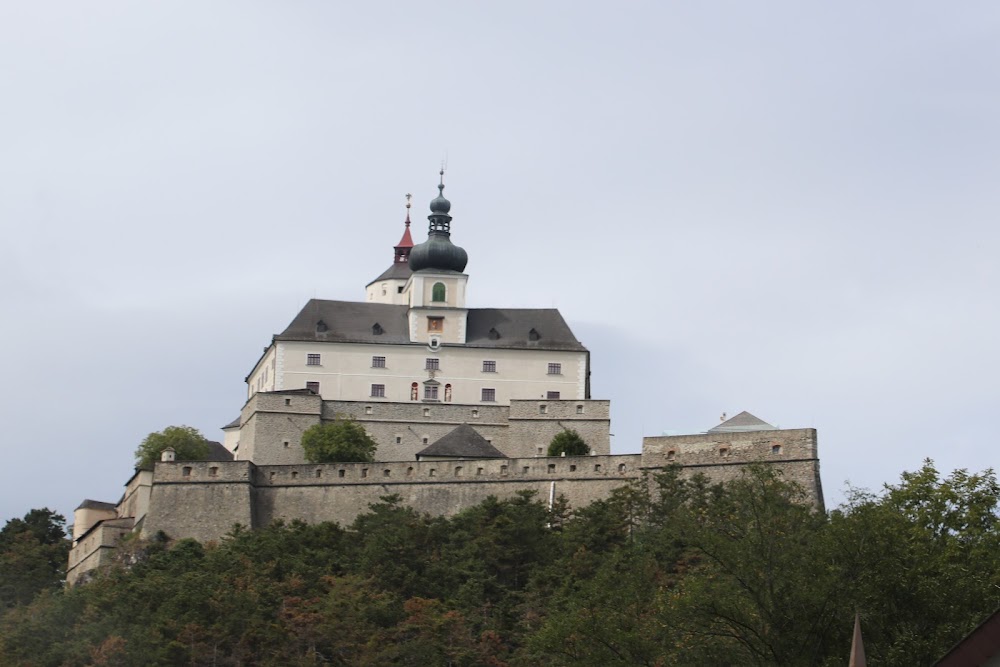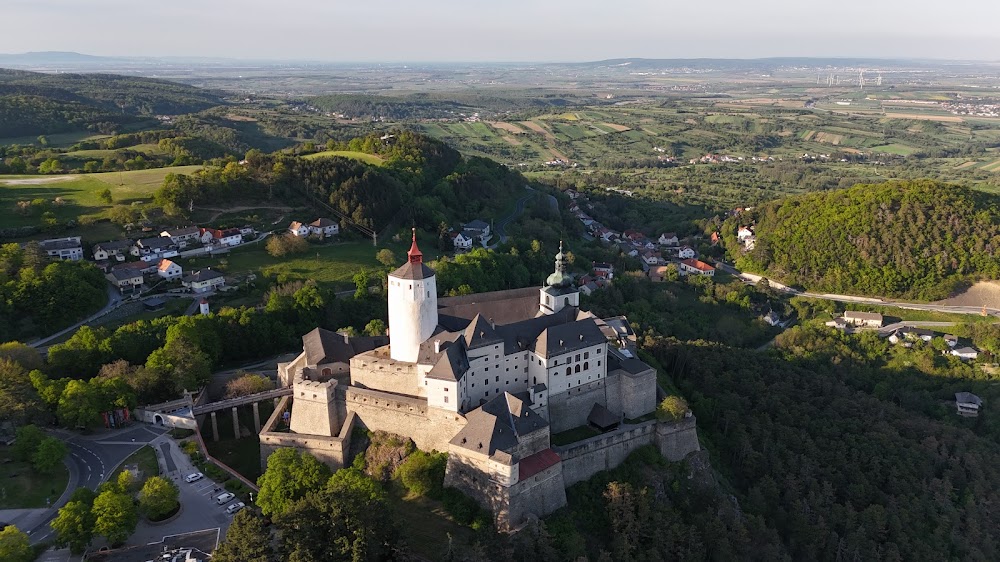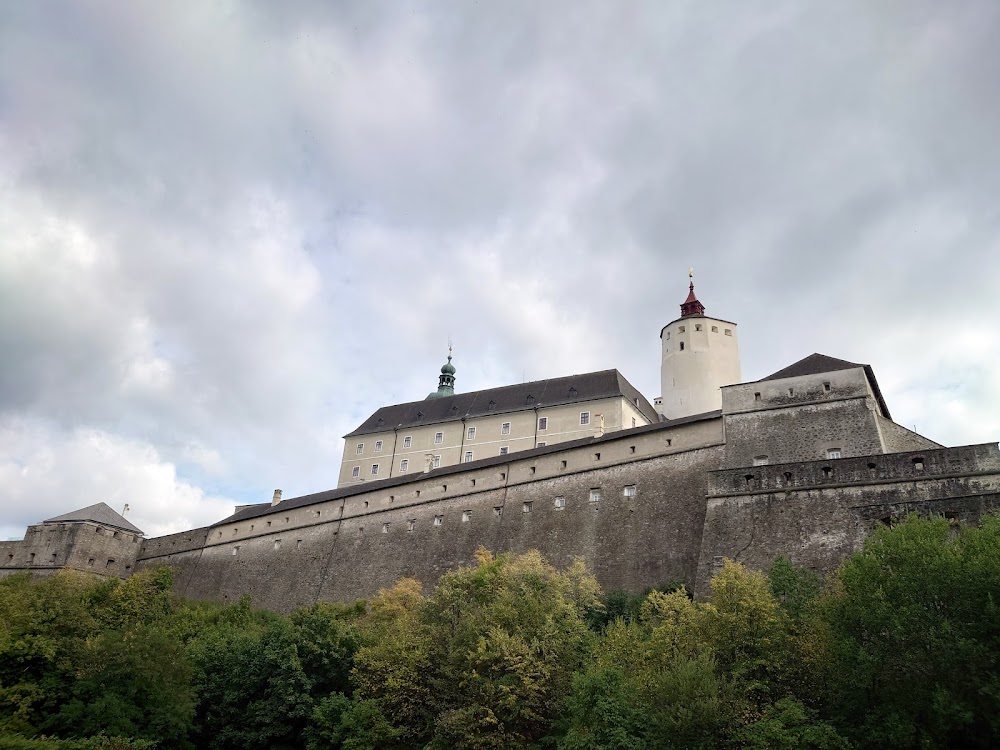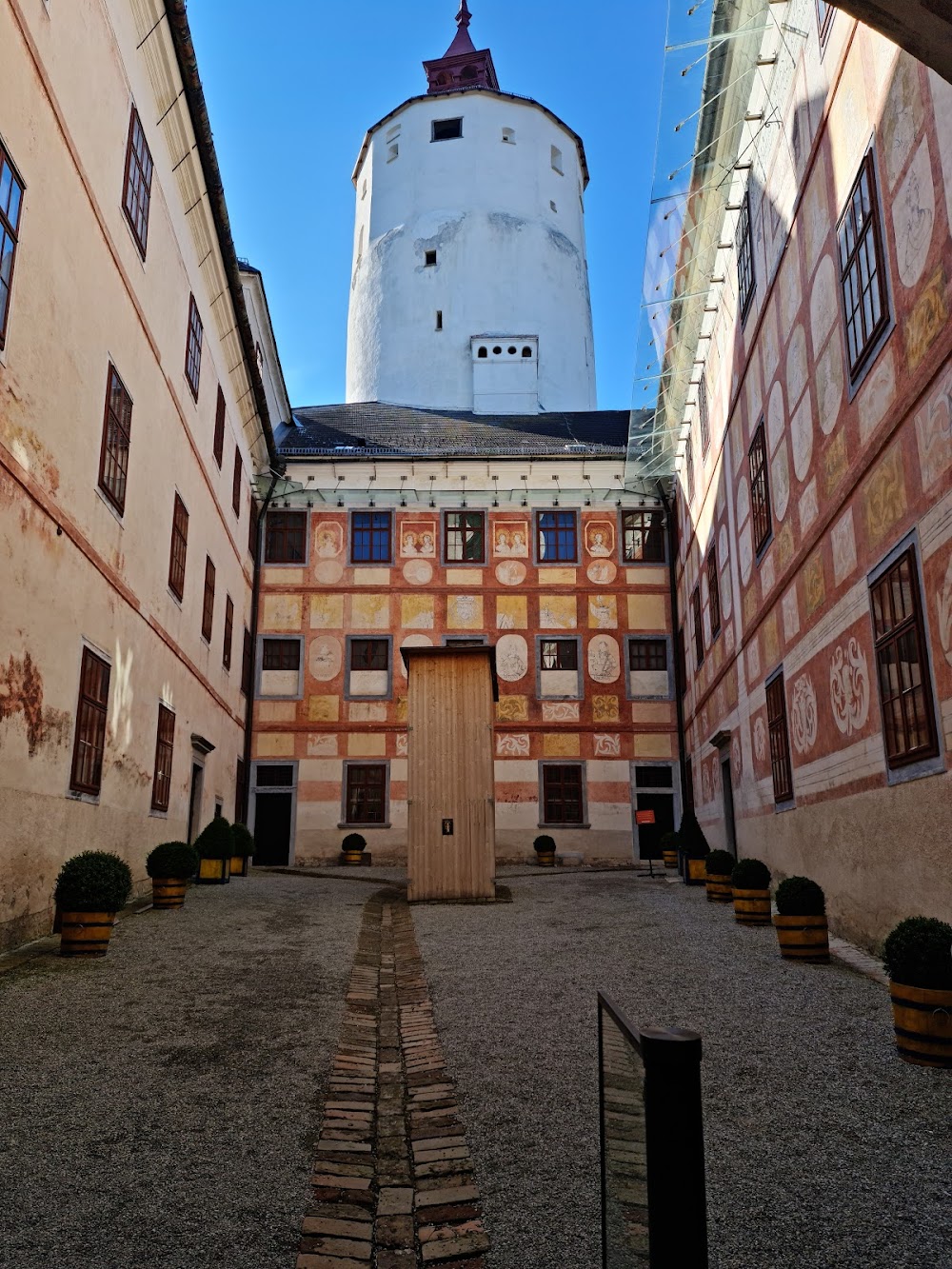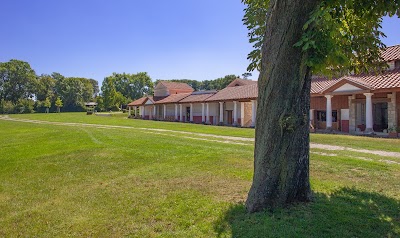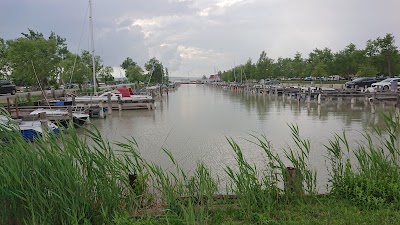Forchtenstein Castle (Burg Forchtenstein)
Overview
Forchtenstein Castle stands majestically in Burgenland, Austria, capturing the imagination of all who visit. This historic structure began its life in the early 14th century as a modest fortification. It was not until the early 17th century that the castle transformed into the formidable stronghold we see today, thanks to the noble Esterházy family, who acquired it in 1622.
The Transformation Under the Esterházy Family
The Esterházy family, particularly Paul I Esterházy, embarked on significant construction projects to fortify the castle against Ottoman invasions. They reinforced the thick walls, added bastions, and constructed a series of underground passages. These renovations turned Forchtenstein Castle into a near-impenetrable fortress, showcasing the cutting-edge military architecture of its time.
Architectural Evolution and Baroque Influences
The architectural evolution of Forchtenstein Castle did not stop with its defensive features. Over the centuries, it also became a splendid residence and a symbol of Esterházy prestige. Baroque influences are evident throughout the castle, from the grand state rooms to the lavish chapel. The interiors are adorned with intricate stuccoes, ornate woodwork, and stunning frescoes, reflecting the grandeur and power of the Esterházy lineage.
The Fascinating Treasury
One of the most intriguing aspects of Forchtenstein Castle is its treasury, where the Esterházy family safeguarded their wealth and precious items. This extensive collection includes priceless artifacts, unique weaponry, and opulent jewelry that have been preserved over the centuries. The treasury offers a rare glimpse into the opulence of noble life during the castle’s heyday.
Craftsmanship and Construction
The construction process itself involved meticulous planning and the labor of countless skilled craftsmen. Local quarries provided the stone for the main structures, while artisans from across Europe were brought in to contribute their expertise. This skilled workforce ensured that every detail, from the imposing outer walls to the delicate interior decorations, was executed to perfection.
A Community Within the Castle Walls
For centuries, Forchtenstein Castle served not only as a military base but also as a residence and administrative center for the Esterházy family. It housed soldiers, noblemen, and workers, creating a bustling community within its walls. The castle's strategic location, perched on a rocky hill, provided a vantage point to control and protect the surrounding region.
A Living History
Today, Forchtenstein Castle stands as a well-preserved historical site and a popular tourist destination. Visitors can explore its many rooms, corridors, and cellars, each telling a story of the past. The castle’s museum exhibits, which include the Esterházy family’s extensive collection of arms and armory, bring history to life for those who wander through its halls.
A Testament to Cultural Heritage
The remarkable engineering and artistic endeavors that went into building and enhancing Forchtenstein Castle are a testament to the ingenuity and ambition of its builders. It stands as a monument to the rich history and cultural heritage of Burgenland and Austria, inviting all who visit to step back in time and marvel at its storied past.


